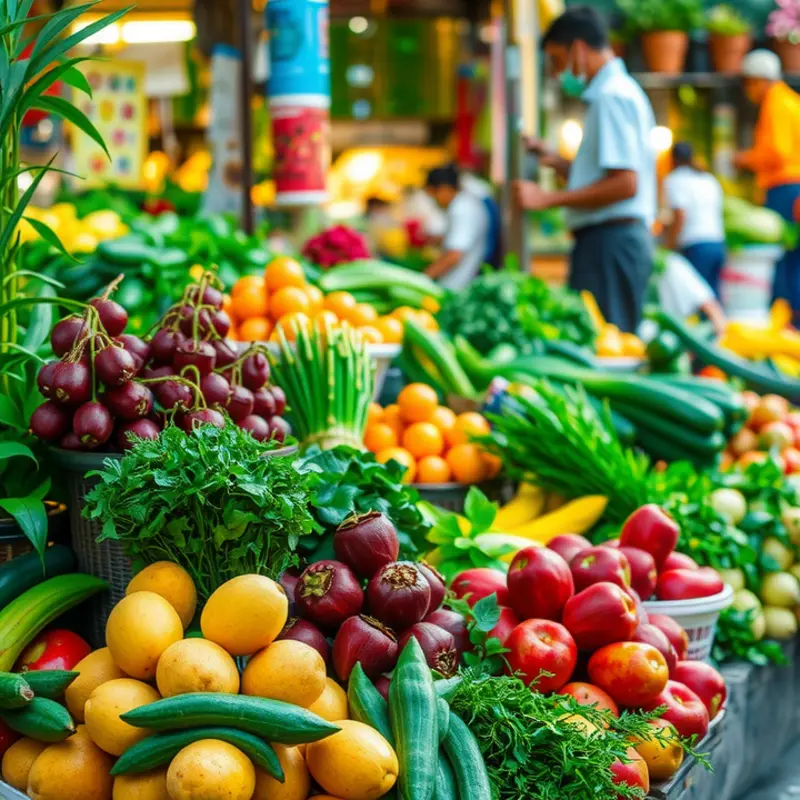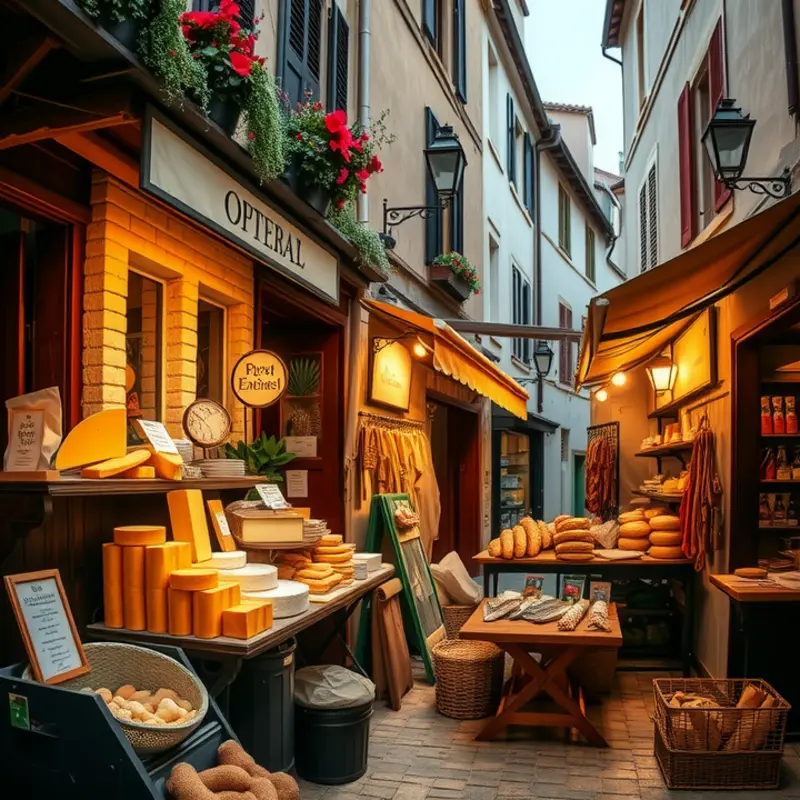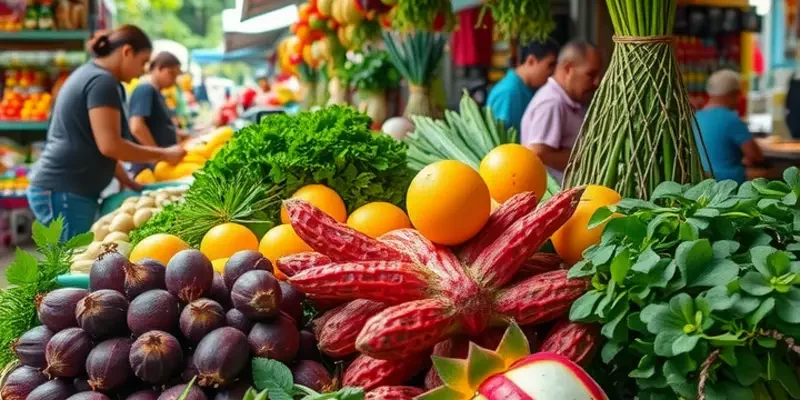Traditional markets are vibrant epicenters of culture, history, and culinary discovery. Traveling through these bustling spaces unveils a tapestry of flavors, aromas, and stories that define each region’s unique food culture. Food enthusiasts and culturally-curious explorers alike can dive into an enriching experience that fosters a deeper connection to the communities and their cherished culinary traditions.
The Vibrancy of Southeast Asia: Markets That Awaken the Senses

The markets of Southeast Asia offer an unparalleled explosion of sensory experiences. These bustling hubs are more than just places to buy goods; they are living, breathing snapshots of the region’s vibrant cultures and cuisines. With each market visit, there lies an opportunity to uncover the unique culinary traditions that define Southeast Asia.
Wandering through the night markets of Thailand, visitors are immediately greeted by vivid displays of fresh produce. Piles of luscious mangoes and papayas are stacked high alongside stalls brimming with fragrant herbs and spices. The smell of lemongrass and basil mingling in the air creates an intoxicating aroma that is impossible to ignore. Nearby, vendors skillfully prepare street foods, their hands moving quickly and practiced as they create delicate parcels of aromatic delights, like the famed pad thai or spicy som tum salads.
Floating markets in Vietnam offer a distinctively different yet equally compelling experience. Here, one can find the entire market set afloat, with vendors selling their goods directly from boats. This method is more than just a tradition; it ensures the availability of the freshest produce. Endless rows of boats showcase ripening fruits like durian and dragon fruit, each more vibrant than the last. The rhythmic exchange between customer and vendor, accompanied by the gentle sway of the water, forms an ambient backdrop that embodies the essence of Vietnam’s hospitality and tradition.
Every market experience taps into the deep culinary roots of the region. The refreshing tang of galangal or the fiery kick of bird’s eye chilies connect visitors with age-old recipes handed down through generations. These marketplaces are treasure troves of flavors, with spices like turmeric and coriander offering the bold and dynamic tastes that are characteristic of much of Southeast Asian cuisine. For those keen on diving deeper into flavor enhancement without resorting to sodium, a visit to the spice stalls can mirror insights shared in flavor boosters without salt.
Beyond the stalls of fresh ingredients, one can’t overlook the variety of street foods on offer. In Malaysia, hawker centers provide delectable bites that range from satay skewers to rich laksa soups. Each dish is a feast for the senses, a balanced symphony between sweet, salty, spicy, and sour, crafted with precision and passion.
But it is not just the array of flavors that captivates — the environment of these markets provides an unparalleled cultural immersion. The sounds of friendly haggling mixed with the sizzle of frying pans create a lively soundtrack that accompanies any visit. The vibrant colors of food and textiles blend harmoniously, creating a visual feast that is as enticing as the smells and flavors.
Exploring the markets of Southeast Asia is a profound experience that engages every sense. Here, where tradition meets everyday life, the foundation of regional cuisines is laid with authenticity and flair. And through each transaction or taste, visitors are invited to become part of a continuous cycle of culinary tradition and innovation.
Europe’s Culinary Treasure: The Market Experience

Europe’s traditional markets are a sensory delight, a cornerstone of the continent’s rich culinary tapestry. The vibrant Mercato di San Lorenzo in Florence is a prime example, bustling with locals and tourists alike. Here, the artistry of Italian cuisine is evident in every stall, each echoing a story of heritage and passion.
Artisan breads, with their inviting aromas, tell tales of generations passing down the secrets of fermentation. As you wander, the sight of expertly cured meats hanging leads to the discovery of dedicated producers, artisans who spend years mastering their craft. Each slice reveals a unique flavor profile, gauged by intuitive seasoning and precise aging—a testament to the tireless commitment of local butchers.
Equally captivating is the historic La Boqueria market in Barcelona. Its colorful displays of cheeses are a study in diversity, from the soft and mild to the hard and piquant. Sampling these offerings, one appreciates how Catalonian producers blend tradition with innovation, continually refining their techniques. These markets serve as cultural cross-sections, where the past meets the present, blending rural traditions with urban influences.
In European markets, sustainability also finds its voice. Many vendors adopt eco-friendly practices, ensuring that the future of food remains as rich as its past. For those interested in transitioning to sustainable practices at home, check our guide on eco-smart kitchen storage.
The exchanges between buyer and seller go beyond simple transactions. They are imbued with camaraderie and shared appreciation for quality, turning every purchase into an enriching experience. These interactions often provide insights into the nuances of local dishes, inviting culinary enthusiasts to experiment beyond their familiar fare.
Such markets preserve the essence of European gastronomy, safeguarding recipes and methods that might otherwise fade into obscurity. The sensory journey through these spaces, from lingering scents of fresh produce to the vibrant cacophony of negotiation, encapsulates the very heartbeat of European food culture.
As you navigate these bustling hubs, the stories they tell are as varied as the regional specialties they feature. Whether you’re savoring a slice of pecorino in Tuscany or indulging in a savory chorizo in Barcelona, each market experience offers an opportunity to connect with a place’s soul through its food.
Europe’s markets do more than just supply groceries; they encapsulate a way of life where food preparation and consumption are cherished arts. This chapter introduces you to the unparalleled world of European market cuisine, laying foundations for an appreciation that stretches beyond taste—transforming every culinary excursion into an unforgettable voyage.
Final words
Traditional markets serve as gateways into the soul of cultures worldwide. They provide authentic experiences filled with flavors, stories, and vibrant communities. Through these explorations, food enthusiasts not only enjoy unique culinary delights but also gain a deeper understanding of diverse heritages and traditions. Engaging with local vendors and tasting authentic dishes fosters connection and appreciation for the artistry involved in global gastronomy. By supporting these markets, we help preserve culinary traditions and ensure that local producers continue to thrive for generations to come.








